Ho Chi Minh City's dream of becoming a coastal megacity is gradually becoming a reality when at the 11th Conference, the 13th Party Central Committee agreed to merge Ho Chi Minh City with Binh Duong and Ba Ria - Vung Tau.
Specific steps
At the recent 39th Conference (thematic conference) of the Executive Committee of the 11th Ho Chi Minh City Party Committee, the Standing Committee of the City Party Committee presented a draft Project to arrange and merge provincial-level administrative units.
This project has developed a plan to merge 3 provincial-level administrative units including Ba Ria - Vung Tau, Binh Duong and Ho Chi Minh City on the basis of implementing two tasks: Arranging provincial-level administrative units, arranging commune-level administrative units; ensuring that after the arrangement, Ho Chi Minh City is a centrally-run city, promoting the potential and advantages of the 3 localities in terms of land area, population size, economic growth results, striving to be a new growth pole of the whole country and the Southeast region in the coming time.
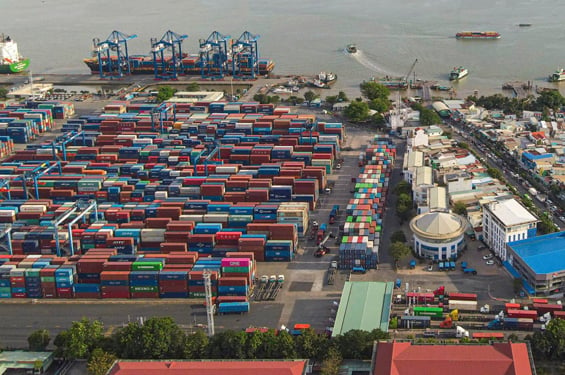
Cat Lai Port - the largest and most modern international container port in Vietnam is facing a prolonged overload situation.
The new Ho Chi Minh City after the arrangement and merger has an area of 6,772.65 km2 (135.43% of the standard), a population of 13,706,632 people (979.04% of the standard), 168 administrative units, forming a new megacity of the Southeast region. In 2024, the total state budget revenue of these 3 provinces and cities will be 677,993 billion VND.
The draft proposal recommends that the Central Government consider and approve allowing Ho Chi Minh City, after rearranging and merging provincial-level administrative units, to extend the implementation period of Resolution 98/2023/QH15 on piloting special mechanisms and policies for the city's development until the end of 2030...
The draft Project on the arrangement and consolidation of provincial-level administrative units was approved by the 11th Ho Chi Minh City Party Executive Committee at the conference.
Expanding the city space is the key step for Ho Chi Minh City to become a true coastal metropolis, both a production center, a transit center..., and a Southeast Asian maritime service center. The merger with Binh Duong (with strengths in industry - urban - logistics) and Ba Ria - Vung Tau (deep-water seaport - sea tourism) creates an opportunity for Ho Chi Minh City after the merger to reach out to the sea in a substantial way; with infrastructure, deep-sea space, and logistics economy. This also creates a complete urban - industrial - seaport - service chain, similar to the model being applied by Shanghai - China, Singapore or Bangkok - Thailand.
The merger of three administrative units is not only a territorial arrangement but also a decisive step for Ho Chi Minh City to become a Southeast Asian maritime megacity - a convergence of the sea, industry, logistics, finance and creative people. A new regional center is taking shape, from the country's reform aspirations.
Developing new economic space
Professor Dang Hung Vo, former Deputy Minister of Natural Resources and Environment, said that the merger of Ho Chi Minh City with Ba Ria - Vung Tau and Binh Duong is of great significance, creating conditions for the city to develop the marine economy, including tourism, exploitation of natural resources, renewable energy to produce wind power, solar power..., including renewable energy from tides and ocean waves.
So what exactly is the marine economy for Ho Chi Minh City? In response to this question, Professor Dang Hung Vo said that this is an issue that Ho Chi Minh City needs to consider. Currently, we have only adjusted administrative boundaries, not taking into account new economic space. Therefore, the next step is to aim for the development of new economic space. In particular, marine tourism can create a new position by welcoming foreign tourists.
According to Professor Dang Hung Vo, Ho Chi Minh City has a very special position, one side is a very large industrial area (Southeast), the other side is a key agricultural area (Mekong Delta). From this position, it can be seen that the potential for service development in Ho Chi Minh City is very large.
"From now on, Ho Chi Minh City can completely think of high-quality services that the world is very interested in, such as: financial service centers, training to improve the quality of human resources or technology services, taking advantage of seaports and transportation..." - he commented.
Professor Dang Hung Vo said Ba Ria - Vung Tau owns modern deep-water ports that can receive large international ships. Meanwhile, Ho Chi Minh City has an international port system with great advantages in logistics services and a favorable trading location.
If Ho Chi Minh City organizes and operates services better and at more competitive costs, waterway transport will certainly develop strongly. At that time, Ho Chi Minh City can completely become an international transit center (logistics hub), a stopover and connection point for international cargo ships. This will help Ho Chi Minh City attract international shipping routes to the port, creating conditions for the development of logistics services and the marine economy.
The current issue is that the relevant parties need to sit down together, calculate and build a specific strategy to realize this potential, based on the principles of geo-economic analysis. Ho Chi Minh City needs to review the planning, clearly define the new development landscape and priority items; from there, implement the works and projects in the most effective and appropriate way.
However, to realize that will and potential, there is still much to do, from planning, infrastructure investment, perfecting policy mechanisms to synchronous connectivity. Coordination and strategic planning are needed for Ho Chi Minh City to exploit the full potential of the new sea area. Equally important is the need for human resources with energy and expertise to implement marine economic development projects.
Reorganize the master plan
According to Mr. Le Duy Hiep - logistics expert, former Chairman of Vietnam Logistics Services Association (VLA) - Ho Chi Minh City is the largest economic, administrative and logistics center in the country.
The seaport system of Ho Chi Minh City plays an extremely important role, especially Cat Lai port - the largest and most modern international container port in Vietnam today. However, Cat Lai port is also facing a prolonged overload situation, creating an urgent need for planning adjustment and reasonable allocation of cargo flows.
Meanwhile, the Cai Mep - Thi Vai port cluster in Ba Ria - Vung Tau is gradually asserting its position as an international deep-water gateway port in the South. In the long term, this will be the main destination for international container shipping routes, contributing to reducing the load on the Ho Chi Minh City port system and improving the import-export capacity of the entire Southern region.
Mr. Hiep acknowledged that when Ho Chi Minh City merges with Binh Duong and Ba Ria - Vung Tau, the growth potential for logistics and freight transport will be huge. Currently, Ho Chi Minh City, Binh Duong and Ba Ria - Vung Tau are the pillars in the Southeast region's connectivity.
In the coming time, when Can Gio deep-water port is formed and the supporting logistics systems are synchronized, the new Ho Chi Minh City will become the leading logistics and sea freight import-export center in Vietnam. In addition, services in the logistics supply chain will play an important role, creating a modern logistics ecosystem, saving costs and enhancing the competitiveness of Vietnamese goods in the international market.
To realize that potential, Mr. Hiep said that the biggest challenge now is to rearrange the master plan for the entire expanded Ho Chi Minh City area, the seaport system, logistics warehouses and key transport infrastructure projects. In particular, the belt roads, especially Ring Road 3, play a key role in connecting areas, helping goods circulate smoothly, reducing pressure on urban traffic and optimizing transportation costs.
When the localities in the Southeast region are merged or linked for more effective management, planning adjustments will avoid overlaps and conflicts of interest and help investors feel more secure.
"HCMC needs to proactively listen to opinions from experts and industry associations to build a logistics development strategy and seaport system that is suitable for practical needs and international trends. This will not only help maximize the potential of the marine economy but also contribute to making the Southern key economic region a driving force for the country's development in the era of development," said Mr. Hiep.
(To be continued)
Huge economic scale
Dr. Tran Quang Thang, Director of the Ho Chi Minh City Institute of Economics and Management, commented that in the context of strong investment in inter-regional transport infrastructure, especially belt roads and expressways, a synchronously developed public transport system will help connect satellite cities of the three localities after the merger, thereby creating momentum for economic development.
According to Mr. Thang, the economic scale of Ho Chi Minh City can account for nearly 30% of the country's GRDP. "After the merger, Ho Chi Minh City can become a model of sustainable urban and industrial development, balancing growth with environmental protection if it is systematically and synchronously planned from deep-water ports, international airports, expressways..., thereby promoting economic competitiveness" - he emphasized.
Source: https://nld.com.vn/tp-hcm-huong-den-sieu-do-thi-bien-19625041720243724.htm




![[Photo] Prime Minister Pham Minh Chinh receives Ambassador of the French Republic to Vietnam Olivier Brochet](https://vphoto.vietnam.vn/thumb/1200x675/vietnam/resource/IMAGE/2025/5/13/f5441496fa4a456abf47c8c747d2fe92)
![[Photo] President Luong Cuong attends the inauguration of the international container port in Hai Phong](https://vphoto.vietnam.vn/thumb/1200x675/vietnam/resource/IMAGE/2025/5/13/9544c01a03e241fdadb6f9708e1c0b65)

![[Photo] Prime Minister Pham Minh Chinh meets with US business representatives](https://vphoto.vietnam.vn/thumb/1200x675/vietnam/resource/IMAGE/2025/5/13/5bf2bff8977041adab2baf9944e547b5)

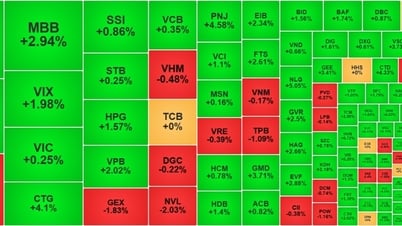
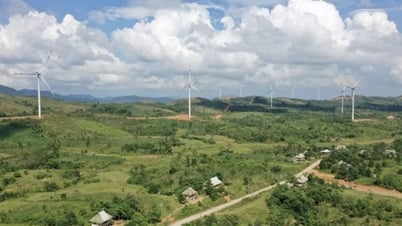
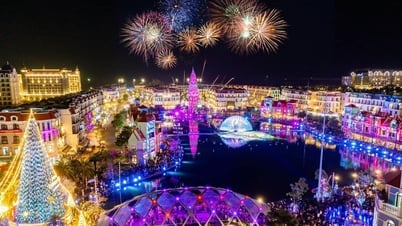

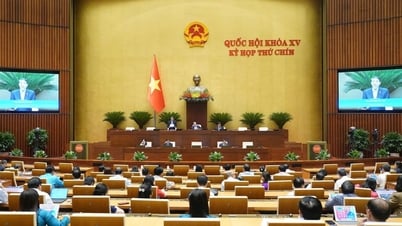








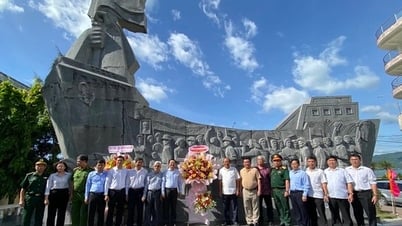









































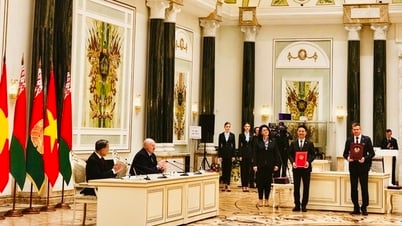








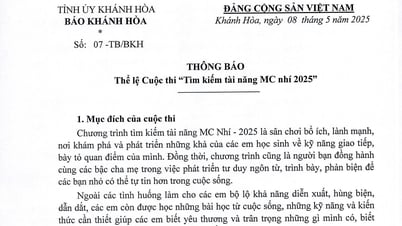



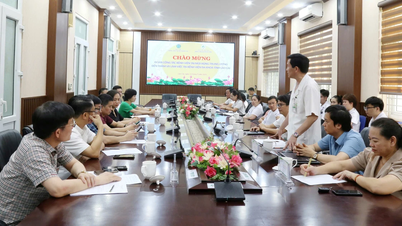

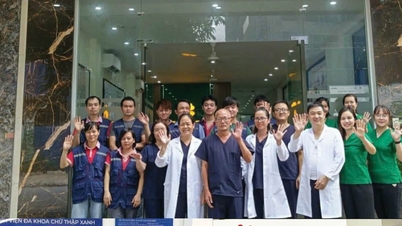

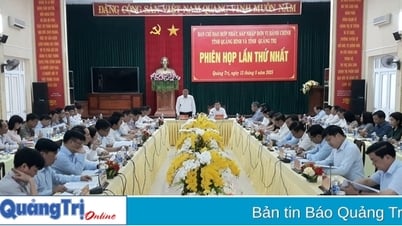













Comment (0)